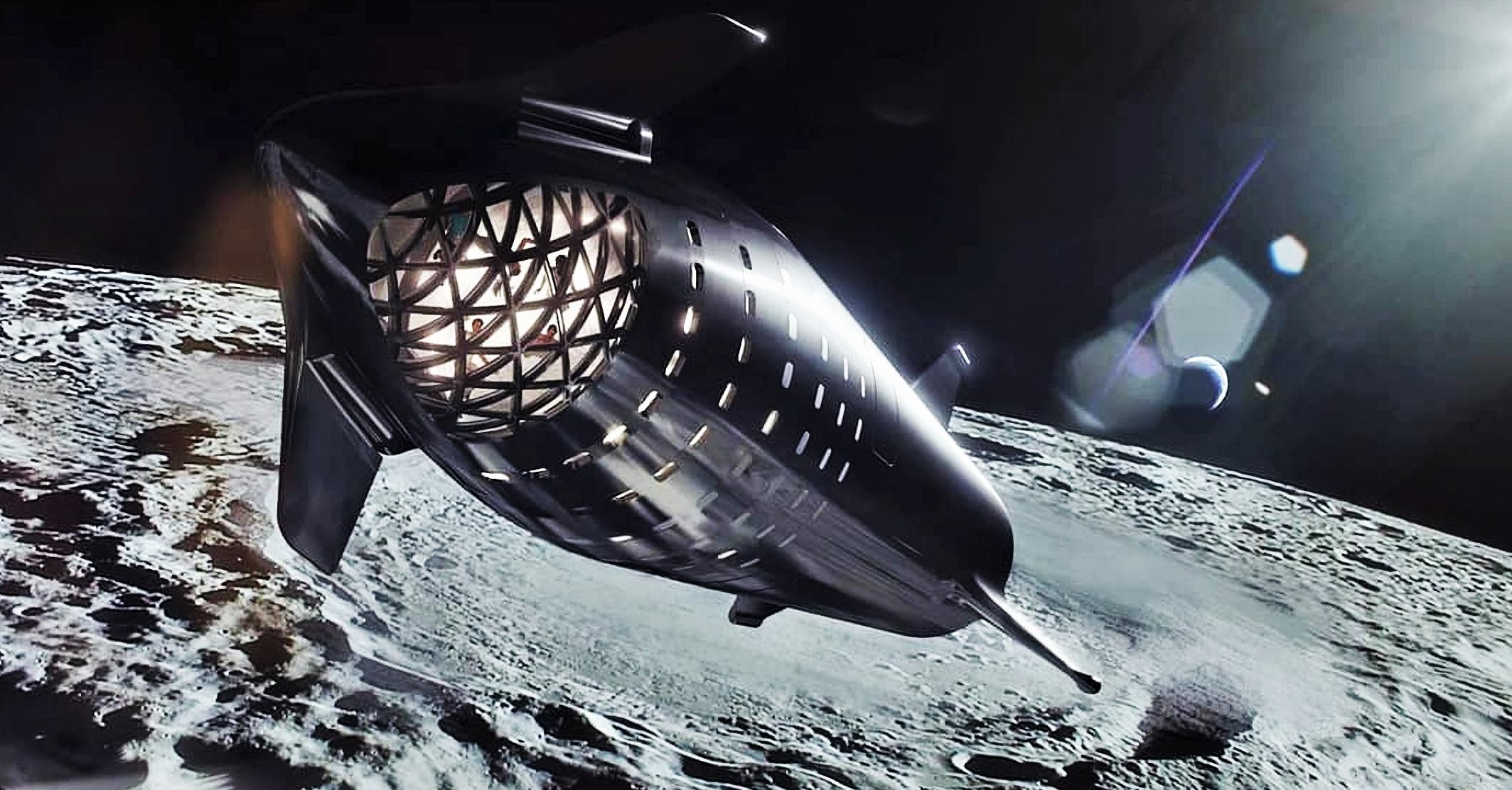

News
SpaceX to mature Starship Moon landing and orbital refueling tech with NASA’s help
NASA has announced 19 technology partnerships between the agency’s many spaceflight centers and 13 companies, including SpaceX, Blue Origin, and more. This round of Space Act Agreements (SAAs) shows a heavy focus on technologies and concepts that could benefit exploration of the Moon and deep space more generally, including lunar landers, food production, reusable rockets, and more.
Put simply, all 19 awards are great and will hopefully result in tangible products and benefits, but SpaceX has a track record of achievement on the cutting edge of aerospace that simply has not been touched over the last decade. As such, the company’s two SAAs are some of the most interesting and telling, both ultimately focused on enabling Starship launches to and landings on the Moon and any number of other destinations in the solar system. Perhaps most importantly, it signals a small but growing sect within NASA that is willing and eager to acknowledge Starship’s existence and actively work with SpaceX to both bring it to life and further spaceflight technology in general.
One agreement focuses specifically on “vertically land[ing] large rockets on the Moon”, while the other more generally seeks to “advance technology needed to transfer propellant in orbit”, a feature that Starship’s utility would be crippled without. In this particular round of SAAs, they will be “non-reimbursable” – bureaucratic-speak for a collaboration where both sides pay their own way and no money is exchanged. SpaceX’s wins ultimately show that, although NASA proper all but refuses to acknowledge Starship, the many internal centers it is nothing without are increasingly happy to extend olive branches towards the company and its ambitious next-generation rocket.
“SpaceX of Hawthorne, California, will work with NASA’s Kennedy Space Center in Florida to advance their technology to vertically land large rockets on the Moon. This includes advancing models to assess engine plume interaction with lunar regolith.”
“SpaceX will work with Glenn and Marshall to advance technology needed to transfer propellant in orbit, an important step in the development of the company’s Starship space vehicle.”
NASA, July 30th, 2019
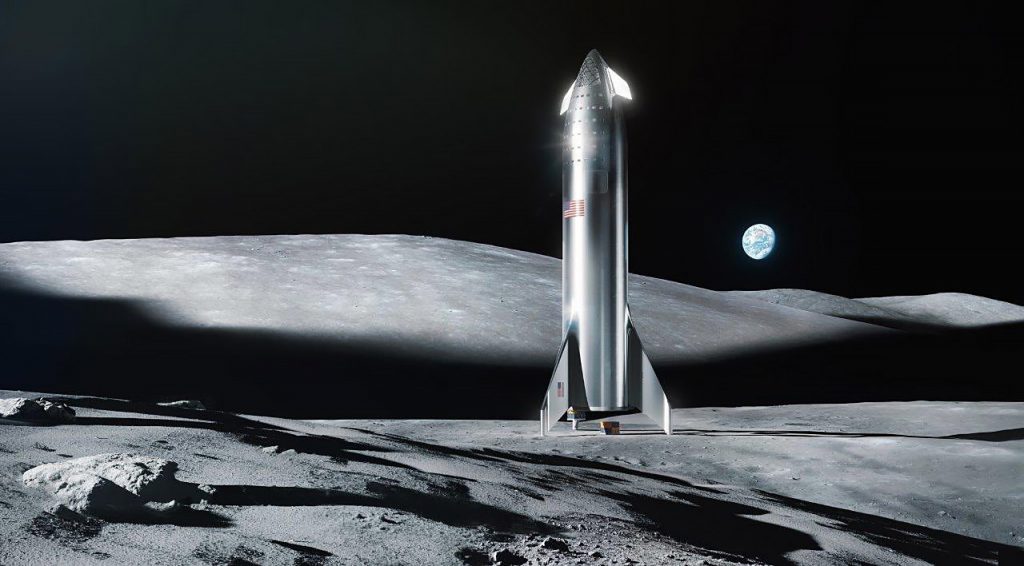
Giant rockets on the Moon
SpaceX’s first SAA centers around studying the task of landing Starship – a “large rocket” – on the Moon and attempting to understand just how the Moon’s powdery regolith (i.e. inorganic topsoil) will respond when subjected to the plume of a Raptor engine. Put simply, the task of landing a spacecraft as massive as Starship has never been attempted on the Moon, and the process itself – irrespective of any potential surprises from plume-regolith interaction – poses some obvious challenges.
In the most basic sense, Starship is massive. According to the vehicle’s circa. 2018 dimensions, it will stretch 55m (180 ft) from nose to tail, be 9m (30 ft) in diameter, and weigh (per 2017 specs) ~85 tons (190,000 lb) empty and upwards of ~1350 tons (2.95 million lbs) fully fueled. For reference, that is almost 80% as tall and more than 2.5 times as heavy as an entire Falcon 9 rocket. In the history of lunar exploration, Apollo’s Lunar Module (LM) – including landing and ascent stages – is the heaviest vehicle to have ever landed on the Moon, weighing a maximum of 5500 kg (12,100 lb) at landing (Apollo 17).
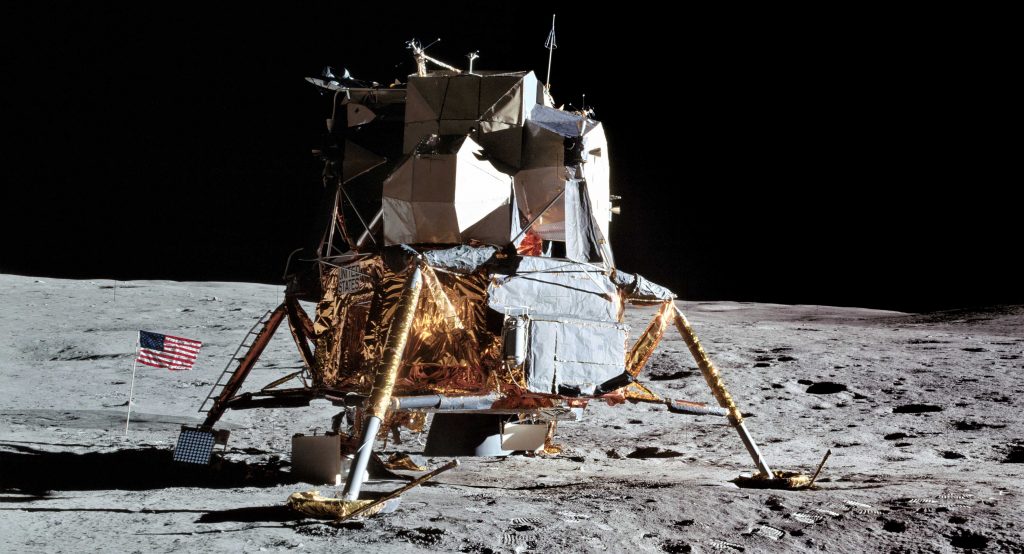
As such, an expendable Starship landing on the Moon with zero propellant for a possible return to Earth would easily break the record for landed mass by a factor of 10-20, while a Starship landing with enough delta V to simply return to lunar orbit – let alone land back on Earth – could easily up that to 30-50x.
Aside from the mass of Starship, there is also the question of how to gently land the spacecraft in the first place. Lunar gravity is roughly 1/6th of Earth’s, meaning that, say, 200 tons (i.e. Raptor’s thrust) would equate to more than 1200 tons of effective thrust on the Moon, a more than 10:1 thrust-to-weight ratio. For reference, the Apollo Lunar Module descent stage was powered by an engine with ~10,000 lbf (4.5 tons) of thrust that could throttle as low as ~1000 lbf (0.45 tons), meaning that even in lunar gravity conditions, the LM could have a thrust-to-weight ratio less than 1. For the purpose of safely landing on the Moon and ensuring a gentle landing, that is an extremely desirable thing to have.
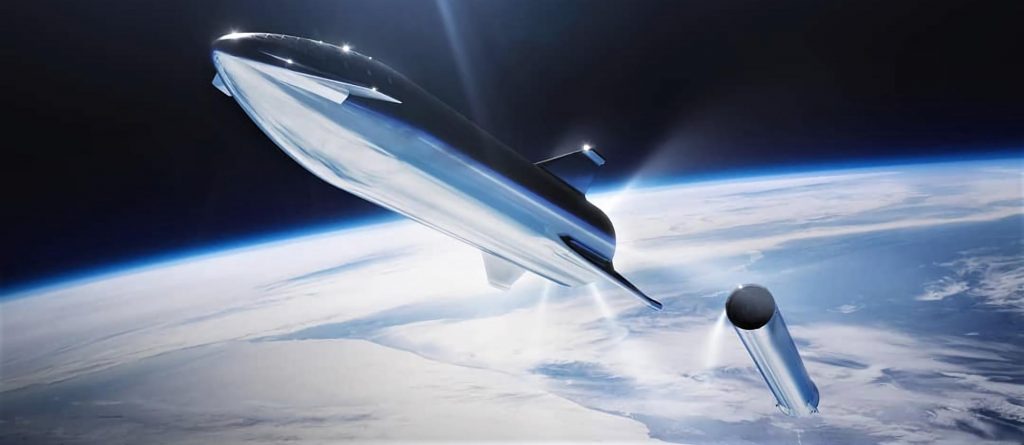
Much like Falcon 9’s upper stage features cold-gas nitrogen thrusters to settle its propellant before MVac ignition, Starship will likely need a similar system, and it’s possible that that system could be used to gently land Starship and tweak its velocity in the final stages of a Moon landing. This study will likely be used in part to figure out what exactly the optimal method of landing Starship is.
How to Refuel Your Starship
Finally, SpaceX’s second NASA SAA focuses on developing the immature technology of in-orbit propellant transfer, an absolute necessity for Starship to simultaneously be fully reusable and capable of landing significant payloads on other planets (or moons). Ever since SpaceX CEO Elon Musk first revealed the company’s Mars-bound launch vehicle in 2016, it has incorporated in-orbit refueling as a foundational feature.

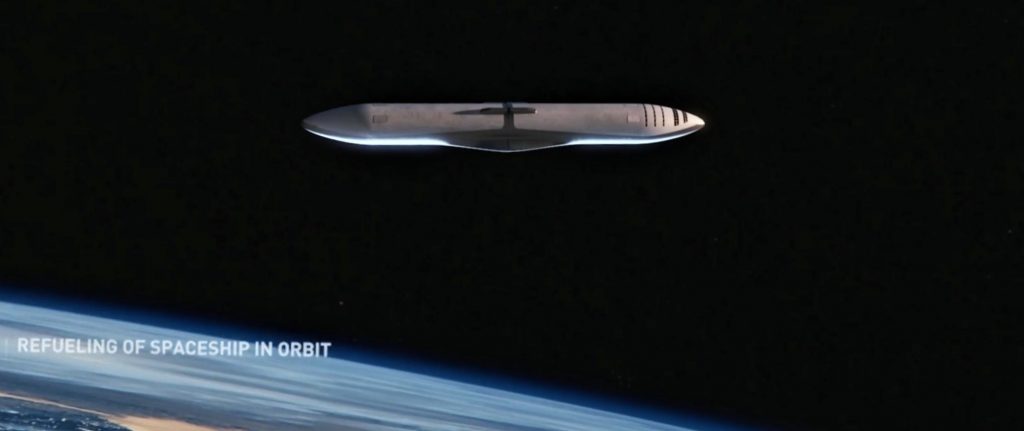
Due to the additions required for full reusability, Starship will essentially need to be launched into Earth orbit and then quickly refueled anywhere from 1 to 10+ times depending on the ultimate destination and the mass of the cargo being delivered. This is not to say that Starship will be useless without refueling – according to SpaceX VP of Sales Jonathan Hofeller, Starship will be capable of launching more than 100 tons (220,000 lb) to low Earth orbit and 20 tons (44,000 lb) to geostationary transfer orbit (GTO), more than enough to satisfy every commercial demand currently in existence.
However, with one or several refueling missions, Starship should be able to turn 100 tons to LEO into 100 tons to the surface of Mars or dozens of tons to the surface of the Moon. Put simply, with reliable and fast refueling, Starship goes from being a major step forward in reusable spaceflight to the key to the solar system and to radically affordable deep spaceflight.
Check out Teslarati’s Marketplace! We offer Tesla accessories, including for the Tesla Cybertruck and Tesla Model 3.
News
Tesla launches in India with Model Y, showing pricing will be biggest challenge
Tesla finally got its Model Y launched in India, but it will surely come at a price for consumers.

Tesla has officially launched in India following years of delays, as it brought its Model Y to the market for the first time on Tuesday.
However, the launch showed that pricing is going to be its biggest challenge. The all-electric Model Y is priced significantly higher than in other major markets in which Tesla operates.
On Tuesday, Tesla’s Model Y went up for sale for 59,89,000 rupees for the Rear-Wheel Drive configuration, while the Long Range Rear-Wheel Drive was priced at 67,89,000.
This equates to $69,686 for the RWD and $78,994 for the Long Range RWD, a substantial markup compared to what these cars sell for in the United States.
🚨 Here’s the difference in price for the Tesla Model Y in the U.S. compared to India.
🚨 59,89,000 is $69,686
🚨 67,89,000 is $78,994 pic.twitter.com/7EUzyWLcED— TESLARATI (@Teslarati) July 15, 2025
Deliveries are currently scheduled for the third quarter, and it will be interesting to see how many units they can sell in the market at this price point.
The price includes tariffs and additional fees that are applied by the Indian government, which has aimed to work with foreign automakers to come to terms on lower duties that increase vehicle cost.
Tesla Model Y seen testing under wraps in India ahead of launch
There is a chance that these duties will be removed, which would create a more stable and affordable pricing model for Tesla in the future. President Trump and Indian Prime Minister Narendra Modi continue to iron out those details.
Maharashtra Chief Minister Devendra Fadnavis said to reporters outside the company’s new outlet in the region (via Reuters):
“In the future, we wish to see R&D and manufacturing done in India, and I am sure at an appropriate stage, Tesla will think about it.”
It appears to be eerily similar to the same “game of chicken” Tesla played with Indian government officials for the past few years. Tesla has always wanted to enter India, but was unable to do so due to these import duties.
India wanted Tesla to commit to building a Gigafactory in the country, but Tesla wanted to test demand first.
It seems this could be that demand test, and the duties are going to have a significant impact on what demand will actually be.
Elon Musk
Tesla ups Robotaxi fare price to another comical figure with service area expansion
Tesla upped its fare price for a Robotaxi ride from $4.20 to, you guessed it, $6.90.

Tesla has upped its fare price for the Robotaxi platform in Austin for the first time since its launch on June 22. The increase came on the same day that Tesla expanded its Service Area for the Robotaxi ride-hailing service, offering rides to a broader portion of the city.
The price is up from $4.20, a figure that many Tesla fans will find amusing, considering CEO Elon Musk has used that number, as well as ’69,’ as a light-hearted attempt at comedy over the past several years.
Musk confirmed yesterday that Tesla would up the price per ride from that $4.20 point to $6.90. Are we really surprised that is what the company decided on, as the expansion of the Service Area also took effect on Monday?
But the price is now a princely $6.90, as foretold in the prophecy 😂
— Elon Musk (@elonmusk) July 14, 2025
The Service Area expansion was also somewhat of a joke too, especially considering the shape of the new region where the driverless service can travel.
I wrote yesterday about how it might be funny, but in reality, it is more of a message to competitors that Tesla can expand in Austin wherever it wants at any time.
Tesla’s Robotaxi expansion wasn’t a joke, it was a warning to competitors
It was only a matter of time before the Robotaxi platform would subject riders to a higher, flat fee for a ride. This is primarily due to two reasons: the size of the access program is increasing, and, more importantly, the service area is expanding in size.
Tesla has already surpassed Waymo in Austin in terms of its service area, which is roughly five square miles larger. Waymo launched driverless rides to the public back in March, while Tesla’s just became available to a small group in June. Tesla has already expanded it, allowing new members to hail a ride from a driverless Model Y nearly every day.
The Robotaxi app is also becoming more robust as Tesla is adding new features with updates. It has already been updated on two occasions, with the most recent improvements being rolled out yesterday.
Tesla updates Robotaxi app with several big changes, including wider service area
News
Tesla Model Y and Model 3 dominate U.S. EV sales despite headwinds
Tesla’s two mainstream vehicles accounted for more than 40% of all EVs sold in the United States in Q2 2025.

Tesla’s Model Y and Model 3 remained the top-selling electric vehicles in the U.S. during Q2 2025, even as the broader EV market dipped 6.3% year-over-year.
The Model Y logged 86,120 units sold, followed by the Model 3 at 48,803. This means that Tesla’s two mainstream vehicles accounted for 43% of all EVs sold in the United States during the second quarter, as per data from Cox Automotive.
Tesla leads amid tax credit uncertainty and a tough first half
Tesla’s performance in Q2 is notable given a series of hurdles earlier in the year. The company temporarily paused Model Y deliveries in Q1 as it transitioned to the production of the new Model Y, and its retail presence was hit by protests and vandalism tied to political backlash against CEO Elon Musk. The fallout carried into Q2, yet Tesla’s two mass-market vehicles still outsold the next eight EVs combined.
Q2 marked just the third-ever YoY decline in quarterly EV sales, totaling 310,839 units. Electric vehicle sales, however, were still up 4.9% from Q1 and reached a record 607,089 units in the first half of 2025. Analysts also expect a surge in Q3 as buyers rush to qualify for federal EV tax credits before they expire on October 1, Cox Automotive noted in a post.
Legacy rivals gain ground, but Tesla holds its commanding lead
General Motors more than doubled its EV volume in the first half of 2025, selling over 78,000 units and boosting its EV market share to 12.9%. Chevrolet became the second-best-selling EV brand, pushing GM past Ford and Hyundai. Tesla, however, still retained a commanding 44.7% electric vehicle market share despite a 12% drop in in Q2 revenue, following a decline of almost 9% in Q1.
Incentives reached record highs in Q2, averaging 14.8% of transaction prices, roughly $8,500 per vehicle. As government support winds down, the used EV market is also gaining momentum, with over 100,000 used EVs sold in Q2.
Q2 2025 Kelley Blue Book EV Sales Report by Simon Alvarez on Scribd
-

 News3 days ago
News3 days agoTesla debuts hands-free Grok AI with update 2025.26: What you need to know
-

 Elon Musk1 week ago
Elon Musk1 week agoElon Musk confirms Grok 4 launch on July 9 with livestream event
-

 Elon Musk5 days ago
Elon Musk5 days agoxAI launches Grok 4 with new $300/month SuperGrok Heavy subscription
-

 News2 weeks ago
News2 weeks agoTesla Model 3 ranks as the safest new car in Europe for 2025, per Euro NCAP tests
-

 Elon Musk2 weeks ago
Elon Musk2 weeks agoxAI’s Memphis data center receives air permit despite community criticism
-

 News5 days ago
News5 days agoTesla begins Robotaxi certification push in Arizona: report
-

 Elon Musk2 weeks ago
Elon Musk2 weeks agoTesla reveals it is using AI to make factories more sustainable: here’s how
-

 Elon Musk2 weeks ago
Elon Musk2 weeks agoTesla scrambles after Musk sidekick exit, CEO takes over sales
















